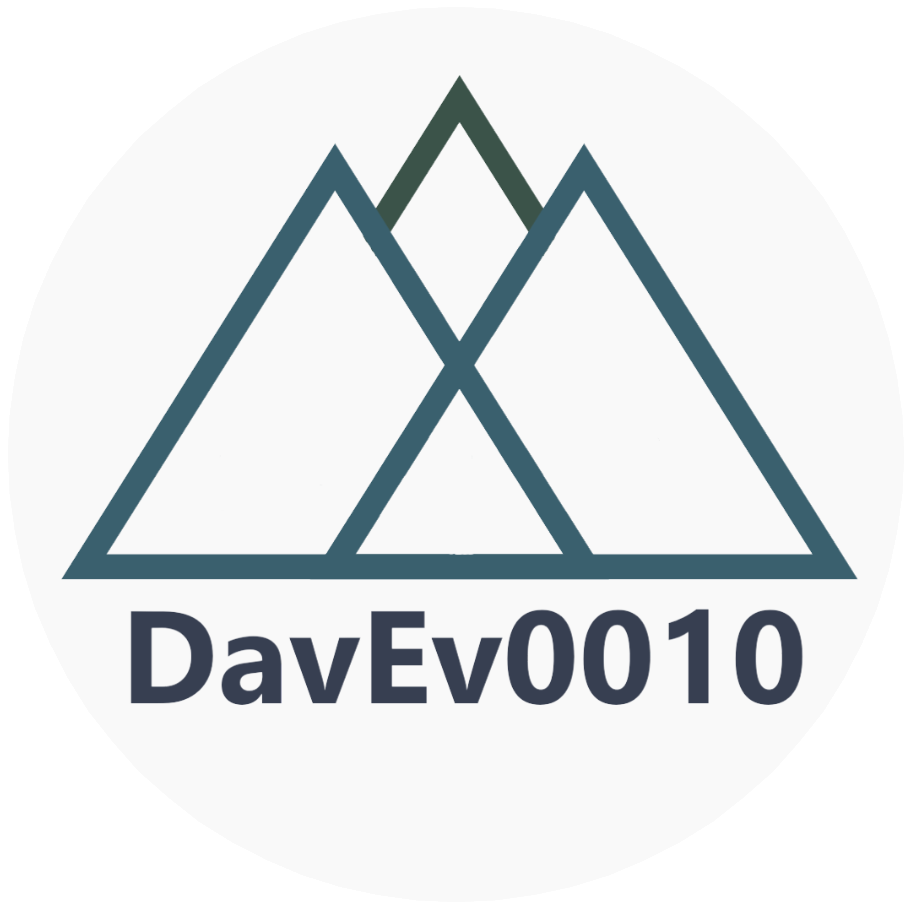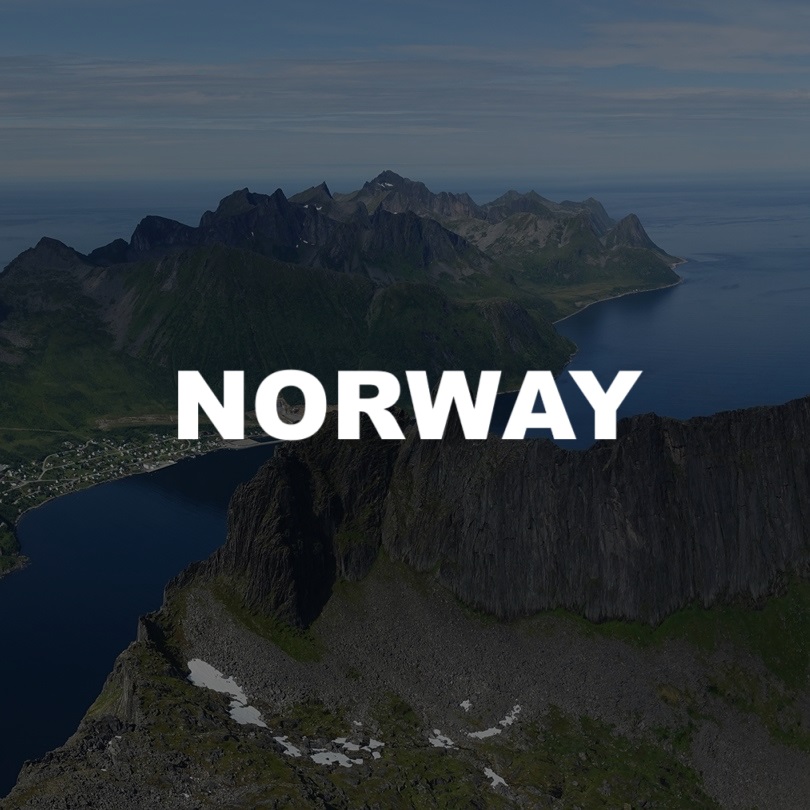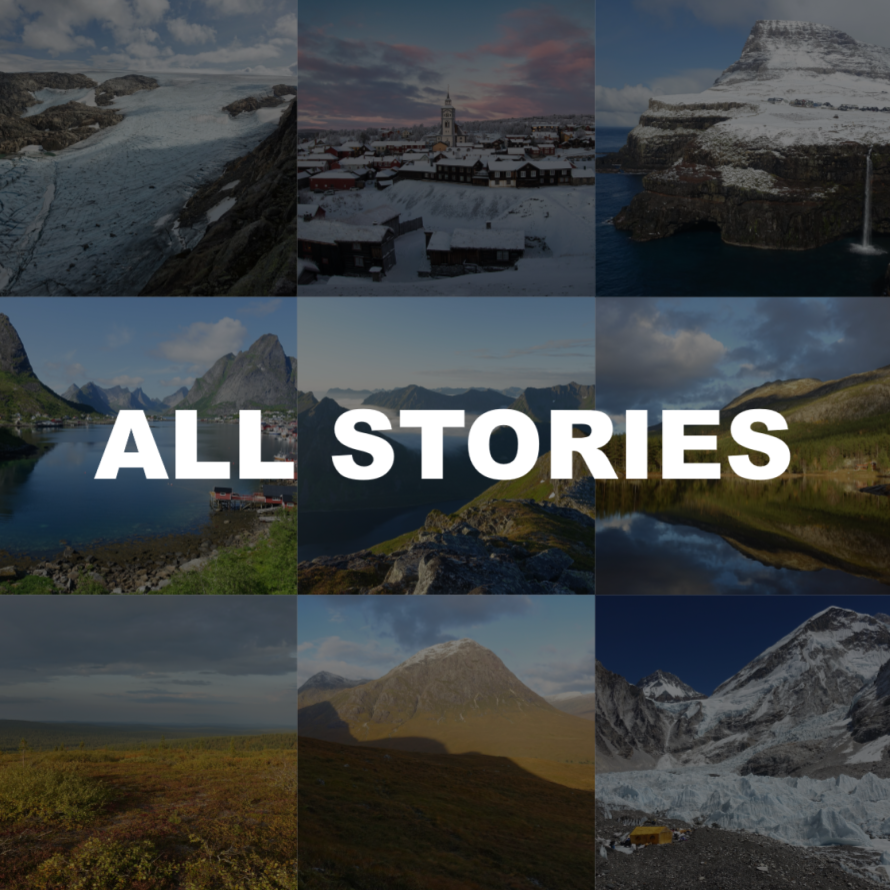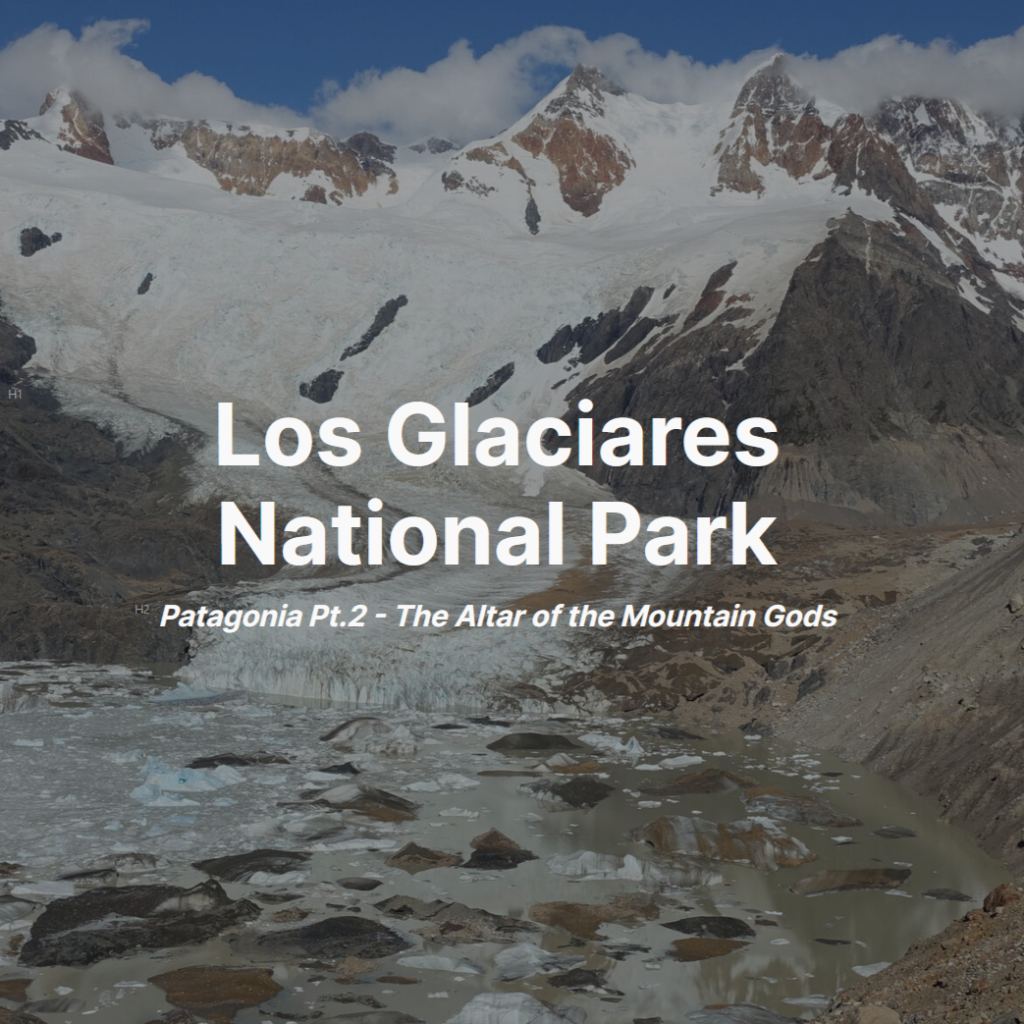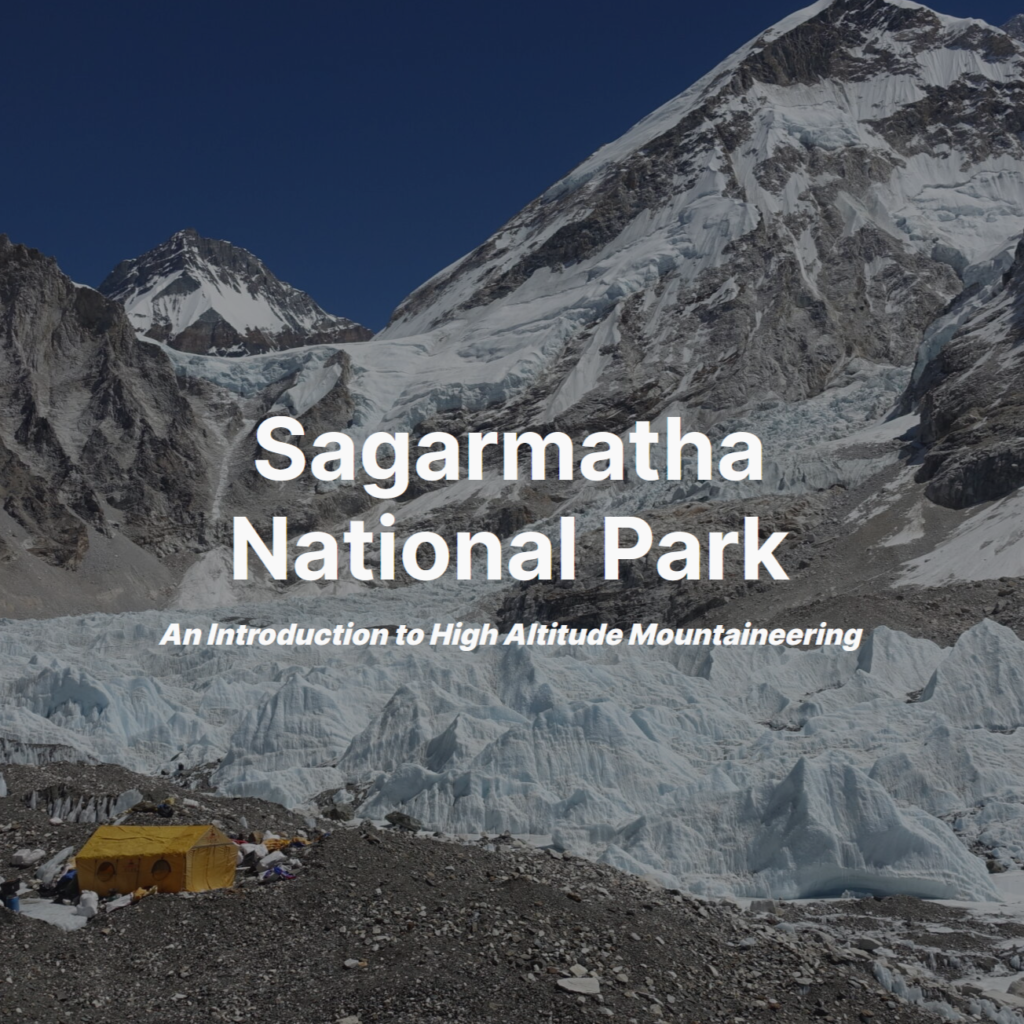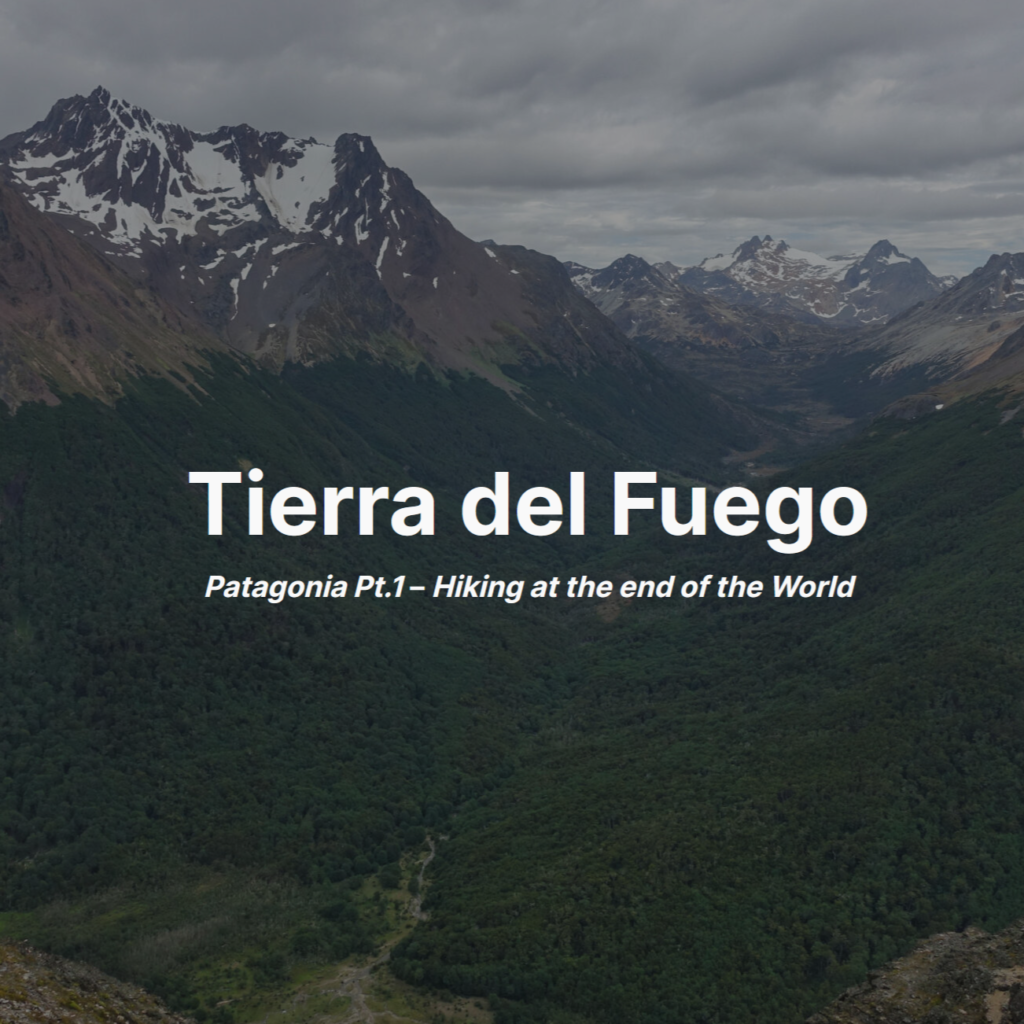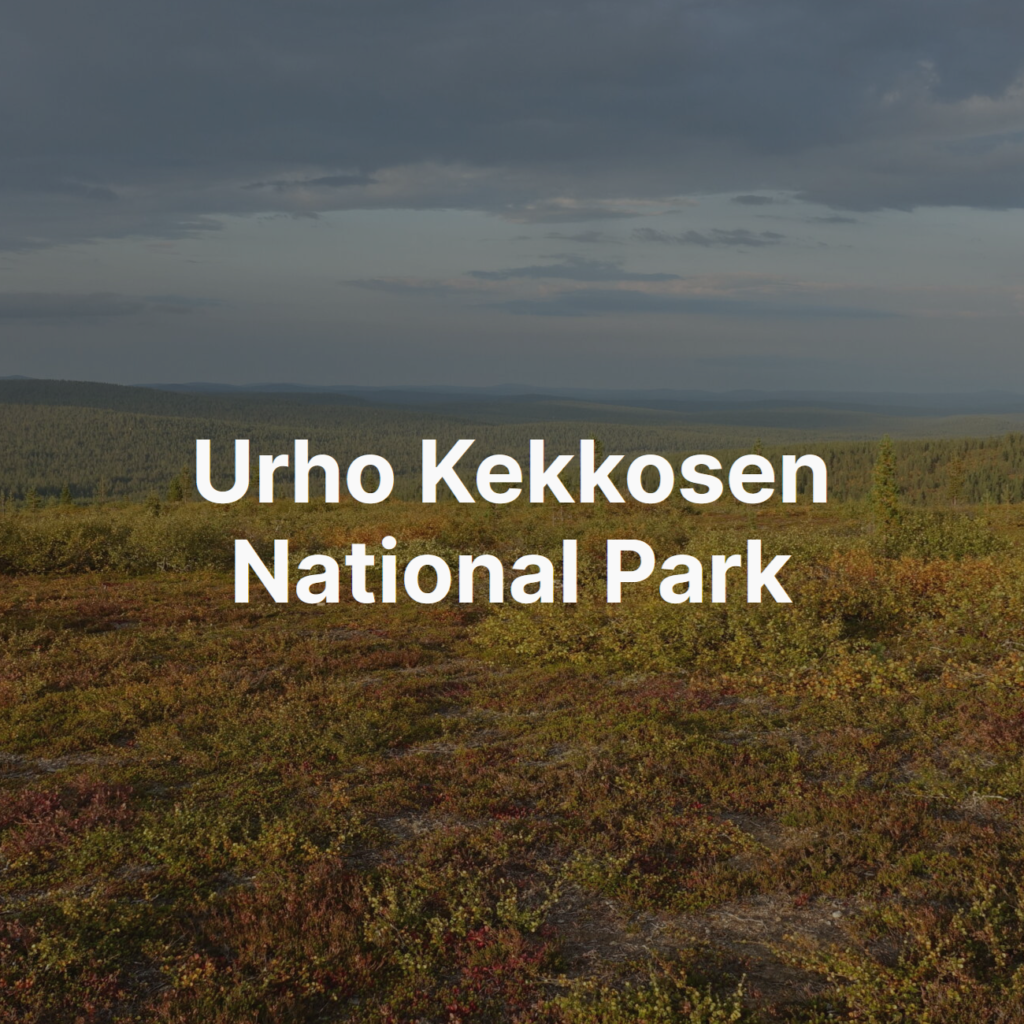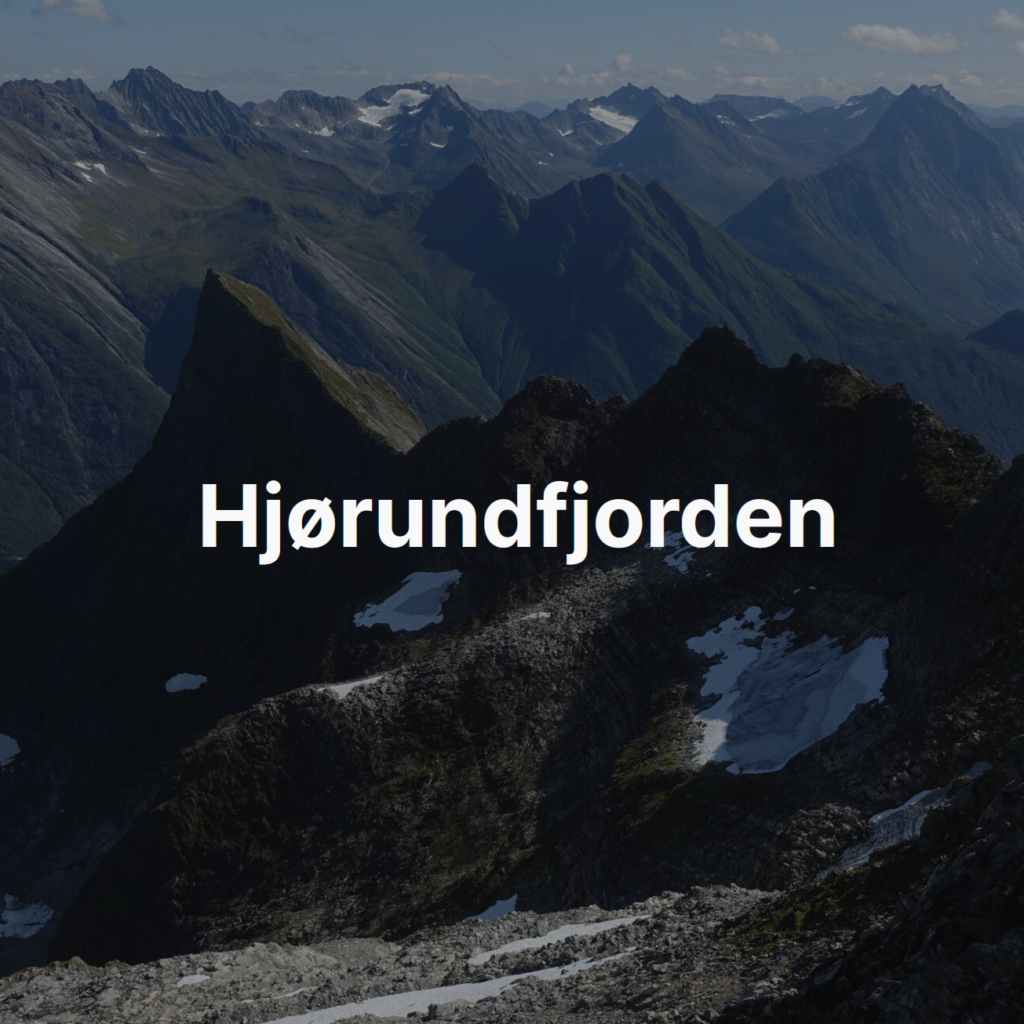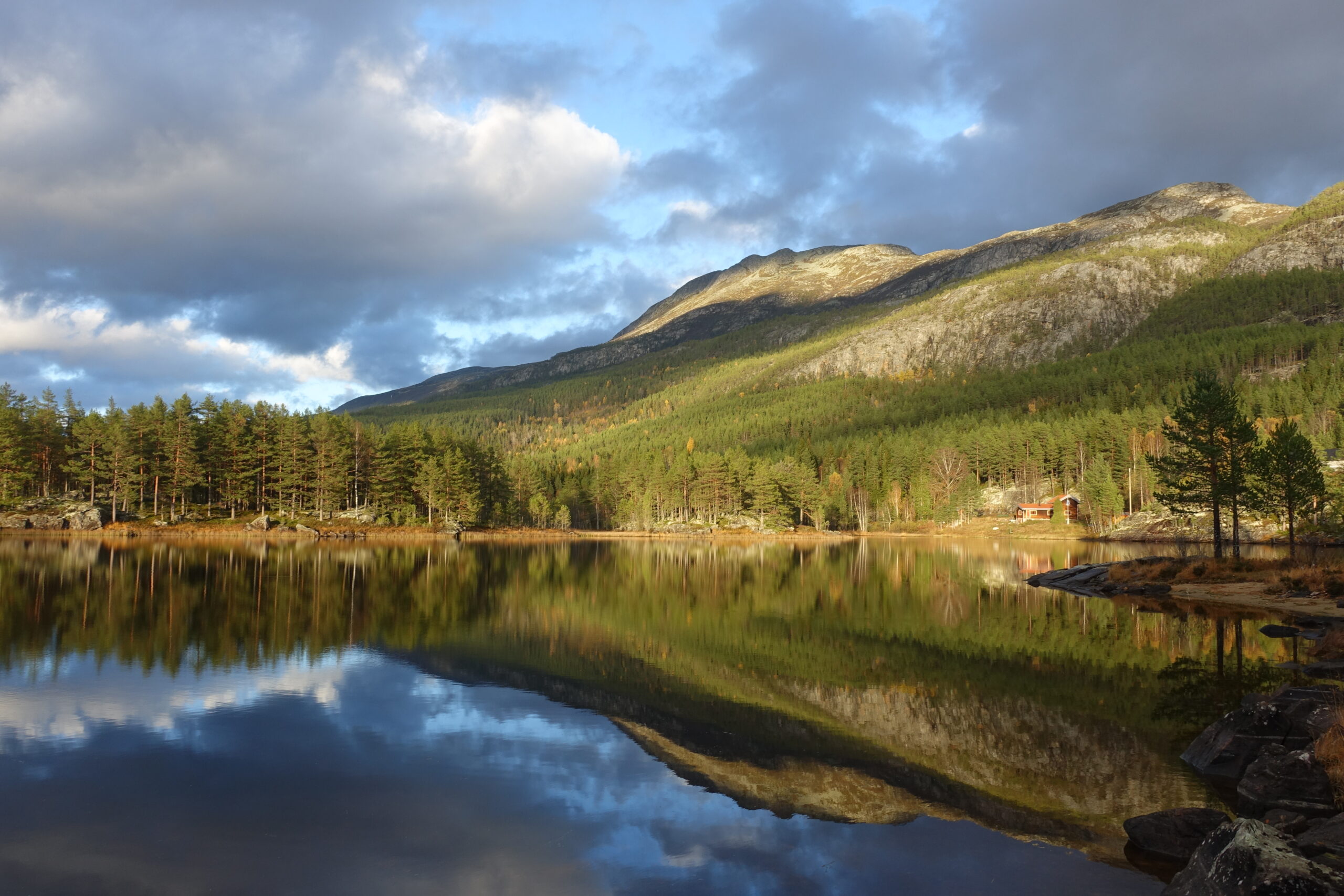
Blefjell
Hiking and Paddling from Blefjell to Bø
Archive Trip
Trip Overview
18 – 27 October 2021
Autumn 2021, I had the opportunity to move to my ancestral hometown in Norway to further my outdoor leadership skills through a programme with the University of South Eastern Norway. I was approaching from a very different angle to most, particularly in the international camp. Most of my peers were from a youth education background and this was clearly the direction the programme was taking. In contrast, I was approaching from a leader-amongst-peers direction (The Mountaineers). This clash occasionally created friction, but I think almost everyone had some excellent take-aways from it.
The autumnal programme was split into four trips: canoeing, hiking, sailing, and a mixed trip. The final trip was a ten day hiking and paddling adventure, where we were given free-reign to craft our own itinerary in one of two locations: Blefjell to Bø or Lifjell to Bø. We would have five days of hiking and five days paddling with a resupply point at the halfway point when we picked up the canoes. Over the course of the trip, everyone had to teach two little ‘lessons’ to the others (that youth education focus of the programme). We would rotate through being day-leaders in pairs, one day hiking and one day paddling.
Only seven days after the fun, but socially draining exploits of the coastal trip, we needed to depart for what was sadly the final trip of the season. That meant that we only had seven days to plan a ten-day, multi-activity, trip. And I only had five days to simultaneously try to recharge my social battery. The internationals and Nordics were once again mixed, as we were divided into groups of eight. Quite a few Nordics ended up dropping out at the last minute (if they wanted to continue the programme, they would need to make up this trip deeper in the autumn – something I would not envy). There was also a last minute shuffle as it was decided to form a group who were allowed to undertake a less demanding trip, focusing more on camp skills. My group became six as we lost one international and one Nordic – I certainly was not going to complain. We were left with two Danes, one Norwegian, a Dutchie, a German, and me. Because one of ours dropped after we had already divided leadership roles, I was due to be solo lead on my hiking day. I was given the option of deputizing a second, but actually preferred to have solo-lead for hiking.
During planning, I immediately clashed with one of the Danes. We had very different approaches to basically everything and she seemed to take offense when we were sharing our needs and expecatations for the trip and I stated that I needed a bit more space/alone time. Further complicating things, whilst I was trying to rapidly rechanrge my social battery, the others in my newly assigned group were keen to spend as much time together as possible – never mind that we would soon be literally on top of eachother, twenty-four hours a day, for ten days.
Einerstjønn – Eriksbu
Monday, 18 October
An early departure meant a slow start to the trip. The starting point in Blefjell was not reachable by public transport, so we had arranged to drive there, roping in friends to drive the car back to Bø. Due to the early hour and number of people required to coordinate, it took quite some time to pack the vehicle and depart. It then took longer than predicted to drive the small back-roads to reach the starting point. It was late-morning by the time we were actually on the move.
As we arrived at DNT Eriksbu, we began to reconsider our initial hiking route. With a slower than anticipated start, we had not made as much progress as expected. We had plenty of day left, but there were also some nice spots to pitch the tents not far from the hytte. We opted to change things up. We made camp, dropped our bags, and took an evening hike up Uverudfjell, a neighbouring hill. In the morning, we would discover that this really was absolutely the right decision.
That evening, I was scheduled to present my first lesson. With little time to prepare and not being much of a teacher, I decided to tell the story of the Am Fear Liath Mòr (the Big Grey Man) – a spectre that is very widely reported to haunt the murky summit plateau of Britain’s second highest Munro (Scotland’s bigfoot, if you will). Everyone seemed to enjoy both the story and the fact that there are potential partial scientific explanations.
Views from the post-camp evening hike
Eriksbu – DNT Sigridsbu
Tuesday, 19 October
When checking the weather forecast before departure, we had seen that our first night was likely to be the coldest of the trip – potentially down to -10C. I don’t think it reached that, but we woke to the first snow of the season (and a lot of pea soup)!
With the previous day’s plan change, we were due two awkwardly short days, with DNT Sigridsbu, where we were scheduled to spend night three only 12km away. Despite the fact that we were on marked track, it was slow going in the wet snow and murky conditions. Even still, we reached what was to be our new camp two awkwardly early in the day. After a lengthy discussion (far too lengthy for what was already a unanimous decision), we decided to press on to the hytte and stay one night earlier than intended. This would both even out our remaining hiking day-distances a little and save us from what was going to be an extremely wet and miserable night camping in the melting snow (temperatures were rising and due to continue overnight).
First snow of the season!
Arriving at the hytte, it was already warm – another group of our colleagues were already there and had spread themselves out across all of the rooms (they weren’t thrilled to see us). For some reason my troublesome Dane decided that my group should all sleep in the same room – no personal space for me! It was a largely pleasant evening, and I was thankful to be inside given the conditions, but I had been looking forward to a lazy day to properly enjoy the hytte with some time to myself.
Sigridsbu: a cozy reprieve from the wet
DNT Sigridsbu – Holmen
Wednesday, 20 October
The next morning the snow had melted and we were treated to some nice cloud inversion! The plan was to head over Store Ble, the highest point of Blefjell. At the bottom, we would cross a road and find a likely spot to make camp. After cleaning the hytte and leaving a little note for another group of our colleagues who were expecting to be sharing it with us that night, we set off. But not before the obligatory session group warm-up exercises…. something I was struggling to mask my annoyance with.
At the top of Store Ble there was a bit of confusion. The red Ts marking the path had long been weathered away and low lying cloud obscured what lay below. My vote was to simply head for a cleft in the mountain that looked likely and make our way down from there (this was, in fact, the correct track). A lot of time was wasted as we dallied though. Eventually I just wandered off myself – sometimes you do just need to take a punt. No one was in any danger of getting lost.
Cloud inversion on Store Ble
There was drama at the bottom too. We had been given license to make our way down at our own pace by the two day-leaders. We three men promptly bounded our way down, welcoming the chance to stretch our legs for a bit. Despite the fact that we had been given license to do our thing, we were told off for being inconsiderate… The Danish ex-sergeant (the Dane I got on well with) played peacemaker.
After a few hundred meters on paved road, we stumbled on an absolutely magnificent view of Store Ble reflected in an unknown lake. This was just about exactly where we had hoped to camp. Unfortunately, there were a few [empty] cabins dotted around the area so we were forced to move deeper into the trees (allemannsretten).
Exceptional lighting on Blefjell
Holmen – Tinnoset
Thursday, 21 October
Day Four was the final full day of hiking and was the day I was due to take solo-lead (my leadership partner having dropped out at the last minute). We had initially been due to have a reasonable distance to cover, with the initial plan to stay in the hytte on night three. I tried to get everyone to take a rolling start rather than the typical morning group warmup. The others weren’t having any of that though, so I assigned the Danish ex-Sergeant to lead some exercises as I sat them out.
We started the morning retreading familiar ground, we were back along Damvatn where we paddled on the first trip. I got into a spot of trouble with some of the group for timing breaks (we would agree a set time, typically 5-10 minutes). I would argue that timing breaks is in everyone’s interest – it keeps the schedule whilst simultaneously ensuring that the agreed rest period is taken. Overall, reviews of my leadership were quite positive. I definitely had a different approach to the rest, but most were able to appreciate the direction I took.
In the evening we made camp on the southern shores of Tinnsjå. Tinnsjå is arguably Norway’s most famous lake – featuring prominently in the Second World War and the race for the atomic bomb. At the north end of the lake, Rjukan hosted the world’s first plant to mass-produce heavy-water. This material was thought to be key to the bomb, though most now consider it to have been a dead-end. In 1944 the Norwegian Resistance sank ferry SF Hydro, which was reported to be carrying a shipment of heavy water back to Germany. This action is widely celebrated, but in reality it had minimal to no actual impact and resulted in considerable innocent casualties.
Tinnsjå– site of the famous 1944 Heavy Water raid
Tinnoset – Bøenøya
Friday, 22 October
Our canoe pickup slot was in midmorning and it was just down the road from our camp. At the drop point, we unloaded the canoes and had the chance to swap personal gear that had been deposited prior to departure. We also ditched the tents and switched to a Lavvu (this was required due to limited gear supplies needing to be shared out to all groups). During the planning phase, I had insisted on bringing a small personal tent as a backup. I was thrilled to finally be able to have some personal space again!
All Blefjell groups camped on Bøenøya, an island splitting Tinne and where we camped the final night of the canoe trip. There was going to be limited campsite selection for the duration of the canoe portion of the trip so this was almost obligatory. The area surrounding Bøenøya was also the main whitewater portion of the river, so camping there was a good opportunity to allow everyone to get as much whitewater in as they wanted. Regardless, we positioned ourselves on the downstream end of the island, positioning us at the front of the queue for departure the next morning.
Bøenøya – Hestøya
Saturday, 23 October
The day started with a leisurely paddle down a quiet stretch of the river. We twice needed to bypass power stations (dams). The first was Årlifoss, where we ended the canoe trip a few months prior, and the second was Grønvollfoss. After the second, it took some time to find a place to relaunch. Eventually a local directed us through his garden. He was surprised we wanted to canoe that stretch though, he thought the whitewater was a little too much. Despite the warning, we started down. Fortunately, the river cooperated and we didn’t have many difficulties at all.
A nice campsite was found at Hestøya, slightly upriver from Svelgfoss, where we would need to start a long portage in the morning. Once again, it was my turn to have a ‘teaching moment’. This time I took the historical approach – expanding on the deep connection between British and Norwegian outdoor culture. The, rather less nationalistic, line I took would not have been approved by the University, but I would argue that my sources were more academic and far less biased than theirs.
We went to sleep to the faint sound of music blasting from across the river.
Hestøya – Heddalsvatnet
Sunday, 24 October
The main event of the next day was a lengthy on-road portage to Notodden. The river was no longer passable. Fortunately, it was a Sunday morning and therefore very little traffic should trouble us. We loaded the canoes up on the dollies and started down the road.
We would be relaunching the canoes from Notodden Marina. It was something of a tradition for everyone to stop for lunch at the Burger King next to the marina. It ended up being a controversial stop and I would point to it as the point when some underlying group tensions started to boil over. Bottom line is that whilst the touch of civilisation was something everyone had been looking forward to, it was very hard for many to get back into gear afterward.
Back to the canoes after Notodden
As we relaunched, the weather continued to threaten, with angry dark clouds and strong winds whipping directly up the length of Heddalsvatnet. The group drama that was descending at Burger King deepened, to the point where safety started to become a concern. The wind combined with the larger lake was causing a bit more chop than most of us were fully comfortable with and the group splintered considerably on the open water, with one canoe being particularly non-responsive. Things were temporarily assuaged after a short break in a slightly sheltered cove, but it was clear the group dynamic needed to be addressed that night.
Finding a campsite on the steep, rocky shores of Heddalsvatnet was a challenge. Being so close to civilisation, most of the areas flat enough to land and make a camp were already developed. Eventually we found something that worked, but only just. We spent the night listening to dead and dying trees crack in the wind above us…. Not the most comfortable or safe.
Heddalsvatnet – Nes
Monday, 25 October
Despite a lengthy conversation after dinner the previous night, tensions were still bubbling over throughout the group. Ahead of us was the longest day of paddling, we were supposed to reach Nes, an outcropping just outside Gvarv, where we would be dropping the canoes. It may have been the longest day of paddling, but it was easy paddling. We had flatwater, only a short section on open-water, and no portages. I was paired with the German, who I got on particularly well with.
The morning went very smoothly, but things took a turn in the afternoon. After a short snack break under Akkerhaugen bridges, we needed to briefly stray into Norsjo, the final large body of water. I had been grumbling about the break, wanting to just get to our destination, but I will admit that it was the correct decision. As we crossed a bay near the rough area we wanted to camp, one of the canoes fell behind. Because we were paddling head-on into swell, none of us felt fully comfortable waiting or turning around unless we had to. We could see that whilst they were frustrated, they were in no danger so decided the best course of action was to finish getting across the bay and find a safe place to regroup. This decision led to an extremely heated shouting match in Danish when we were able to reconvene. Fortunately, we were done for the day by then…
We had an amazing campsite for our final night and plenty of time to enjoy the changing light over Norsjo. As always, I took my personal tent and camped slightly away from the others…
Views of Norsjø from a magnificant campsite
Nes – Bø
Tuesday, 26 October
We woke on our final full day in pole position to ‘win’ the race [most of] our group was unofficially having with the others (we were the group camping closest to Gvarv where the canoes would be returned). Because we had some time to waste, and the weather was spectacular, we had a slow morning before deciding to explore the head of Norsjo a bit more. ‘Real’ coffee was made (and went cold before anyone could even start drinking it) and the group participated in a lengthy warm-up session that I quietly sat out (to the respect of some and annoyance of others).
Just off our camp were two small islands, one with private hytte. Story was, they were built by a less than popular wealthy man from Notodden (not a clue as to the validity of the story). With little else to occupy us for the day, the rest of the group was keen to check them out. I was less enthusiastic. I am an ardent supporter of the right to roam, but I also prefer to respect people’s privacy if I don’t have a need to intrude. The owners of the hytte had posted numerous signs indicating that visitors were not welcome, we had no need or reason to press the matter, and all of the small island was within 100m of the cabin (ergo bad form to intrude without permission or reasonable justification). Ultimately, no one was around so no harm done.
A festive final morning as we prepared to drop canoes in Gvarv
After returning the canoes in Gvarv, it was a very short walk to where we due for our final camp. All groups, from both regions, were camping the same area so it was a bit of a festive atmosphere. We all kept our distance from eachother, but you could see the campfires dotted around the cluster of lakes. I had been concerened about how annoying it would be to camp within a 30 minute walk of home. In other circumstances, I would have just closed out the trip that night, but it was less of a frustration than I expected. We had quite an intense feedback session over the campfire.
Farms of Gvarv
Departure
Wednesday, 27 October
The final day was largely an insurance day in case a group fell behind, be it due to weather, overambitious planning, or any other reason. Despite having only a very short stroll back to town, we made an early start (in no small part at my behest). Everyone was ready for a shower and real food and there just wasn’t any reason to prolong things. We were the first group back to the gear room and I was home by 10:00.
Afterwards
I was apprehensive going into this trip. Ten days is a long time to be out, and it is a very long time for me to be in such close proximity to strangers (or anyone). Weather was also going to be a concern – late season in the Norwegian fjells can offer some of the most rewarding conditions, but can also be extremely punishing. In the end, it turned out to be a very memorable trip.
- During the planning stage, I had tried to be clear about my need for a little space – I can be a much better group member and leader if I am not on top of my colleagues 24/7. This was quickly met with hostility by some and I backed down – I knew I was the odd man out and didn’t want to rock the boat too much from day zero. In hindsight, I regret that.
- There were very fundamental differences between my goals for this programme and the goals of my colleagues. I did my very best to not be contentious of these differences (but did not always succeed). Whilst some colleagues did the same, others definitely did not. Unsurprisingly, this led to both growth and friction, respectively.
- Even with a relatively small group of five, we were often pulled in different directions due to differences in approach and priority. I would argue this is a prime example of why group size should be minimised. As K2’s 2008 season proved: the idea of safety in numbers is largely a fallacy. There is danger in numbers, no matter how aligned everyone is on goals or how much planning is done.
- I made the right decision regarding whitewater canoeing on Day 6. Everyone else in my group capsized (often after being a little too overconfident in their skills) on the short stretch I skipped. It likely would have been a deathblow to my interest in canoeing if I had joined.
- The group management skills, and my requirements as both a leader and group member will likely be extremely useful for some upcoming expedition ideas. I may prefer solitude, but it isn’t always possible.
- With everyone rotating on cooking duty, it was interesting to see ethe different approaches. Some put in quite a bit of effort with rather lavish (heavy/bulky and expensive, but quite tasty) options. Others (me) went for basic but easy to carry/prepare meals where everyone could have as many colories as they wanted.
Footnote
All photos are exclusive property and may not be copied, downloaded, reproduced, manipulated or used in any way without permission of the photographer.
